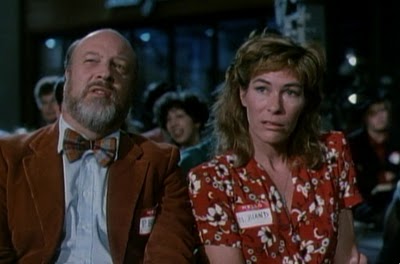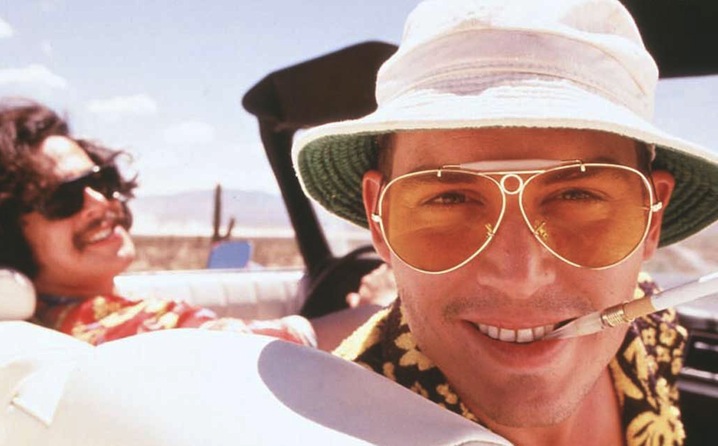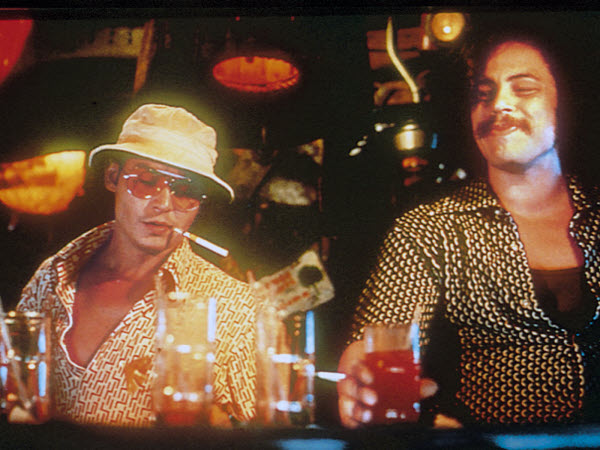 Splatter Cinema presents THEY LIVE (1988); Dir. John Carpenter; Starring Roddy Piper, Keith David and Meg Foster; Tuesday, April 8 @ 9:30 p.m. (photos and merch table open @ 9:00 p.m.); Plaza Theatre; Trailer here.
Splatter Cinema presents THEY LIVE (1988); Dir. John Carpenter; Starring Roddy Piper, Keith David and Meg Foster; Tuesday, April 8 @ 9:30 p.m. (photos and merch table open @ 9:00 p.m.); Plaza Theatre; Trailer here.
By Aleck Bennett
Contributing Writer
Ah, THEY LIVE. It’s long been a slippery little beast. Much like 1982’s THE THING, it performed less-than-admirably at the box office when it opened. And, again like THE THING, while critical reception at the time was favorable, it has only recently come to be considered one of John Carpenter’s best films.
Me, I’ve been on board since I first saw it back in the waning days of the Reagan administration.
I mention the time frame because, by Carpenter’s own design, it’s practically impossible to look at the film outside of the realm of the political. Let’s not mince words here: for all the machismo, violence and existential horror John Carpenter’s films may tread in from time to time, the director is a hippie at heart. He took a minute to look around in the 1980s, saw the emphasis on crass commercialization and the worship of wealth encouraged by the Reagan Revolution and was pissed off. But by merging his anger and aggression with his borne-of-the-‘60s anti-right-wing politics, he created a movie that’s more of a piece with the radical political stances of hardcore punk acts like MDC, D.O.A. or the Dead Kennedys. For in this movie, it’s not just that the rich and powerful elite are evil; they are actually not even human.
The premise of the film is a simple one: a drifter named Nada (Roddy Piper) discovers that the oligarchs who rule planet Earth are in fact aliens in disguise, exploiting the planet’s resources for their own benefit before leaving it once they destroy the environment via global warming. They keep humanity in the dark, and their appearances obscured, through television signals that brainwash the public and transmit subliminal propaganda commanding the populace to “OBEY,” “SLEEP” and “CONSUME.” Faced with this knowledge (and able to see through the haze of brainwashing thanks to some specially-designed sunglasses), Nada has only one option: rip the system.
 And like listening to, say, D.O.A.’s WAR ON 45 or the Dead Kennedys’ FRESH FRUIT FOR ROTTING VEGETABLES, once the movie gets going, it’s a shot of pure adrenaline. It’s fast, it’s funny, it’s violent (there’s an epic 5 ½ minute fist fight between Roddy Piper and Keith David that is both thrilling and hilarious), and its sardonic ridicule of the rich and powerful—and those who kowtow to them—as anti-human scumbags makes you wish that the Revolution would be something as easy as tearing down a TV broadcast antenna.
And like listening to, say, D.O.A.’s WAR ON 45 or the Dead Kennedys’ FRESH FRUIT FOR ROTTING VEGETABLES, once the movie gets going, it’s a shot of pure adrenaline. It’s fast, it’s funny, it’s violent (there’s an epic 5 ½ minute fist fight between Roddy Piper and Keith David that is both thrilling and hilarious), and its sardonic ridicule of the rich and powerful—and those who kowtow to them—as anti-human scumbags makes you wish that the Revolution would be something as easy as tearing down a TV broadcast antenna.
[Note: the utilization of a television station to promote things like a particular political ideology, rampant consumerism, stratification of the classes and glorification of material wealth should not be confused with any reality—past, present or future. OBEY.]
At the time, the casting of Roddy Piper as Nada was seen as an enormous misstep by Carpenter. This was just after the WWF (now WWE) became a pop culture phenomenon, and “Rowdy” Roddy was one of the federation’s most famous athletes. However, crossovers into mainstream media outside the ring (Hulk Hogan’s appearance in ROCKY III and his starring role in NO HOLDS BARRED, for instance) were seen as curiosities at best. So Piper’s role—which many saw as ideally meant for Carpenter’s most frequent leading man, Kurt Russell—was viewed with a jaundiced eye right from the start. But his performance is an able one. He brings a raw, brutal physicality to the part that wouldn’t suit Russell quite as well, and he comes across as a stoic “man out of place” in a way that would surprise anyone familiar only with his hyper-confident, loud-mouthed wrestling persona. He pulls this off in such a successful way that when he comes closest to the “Rowdy” attitude he was famous for—such as when he first puts on the sunglasses and sees people as they really are—it truly sells the shock his character is supposed to be feeling. His performance has simply aged well and holds up in a time where the wrestling-to-movie transition is more accepted (thanks, Dwayne “The Rock” Johnson!).
Keith David, as Piper’s friend Frank Armitage (also the name Carpenter used for his writing credit; an allusion to Henry Armitage from H.P. Lovecraft’s “The Dunwich Horror”) is, as always, excellent. He brings a necessary gravitas to the film, keeping the satire and fantasy grounded in the real world. Meg Foster as Holly Thompson, Nada’s love interest, is mysterious and alluring; her motives constantly under question, her understated performance never telegraphs where her allegiances truly lie.
And, as to be expected, Carpenter’s classically-informed composition techniques further show him to be a master of the Cinemascope frame. For a meager $3,000,000 budget, Carpenter makes the most of his downtown Los Angeles locations and creates a series of visually striking setpieces and shots. Tightly edited and winningly scripted (it’s one of the best films Carpenter has ever written on his own), it never lets up.
So get your sunglasses on, stock up on bubble gum and get ready for some alien-elite-ass-kicking!
[Note: Just don’t get any fancy ideas, humans. OBEY.]
Aleck Bennett is a writer, blogger, pug warden, pop culture enthusiast, raconteur and bon vivant from the greater Atlanta area. Visit his blog at doctorsardonicus.wordpress.com





























